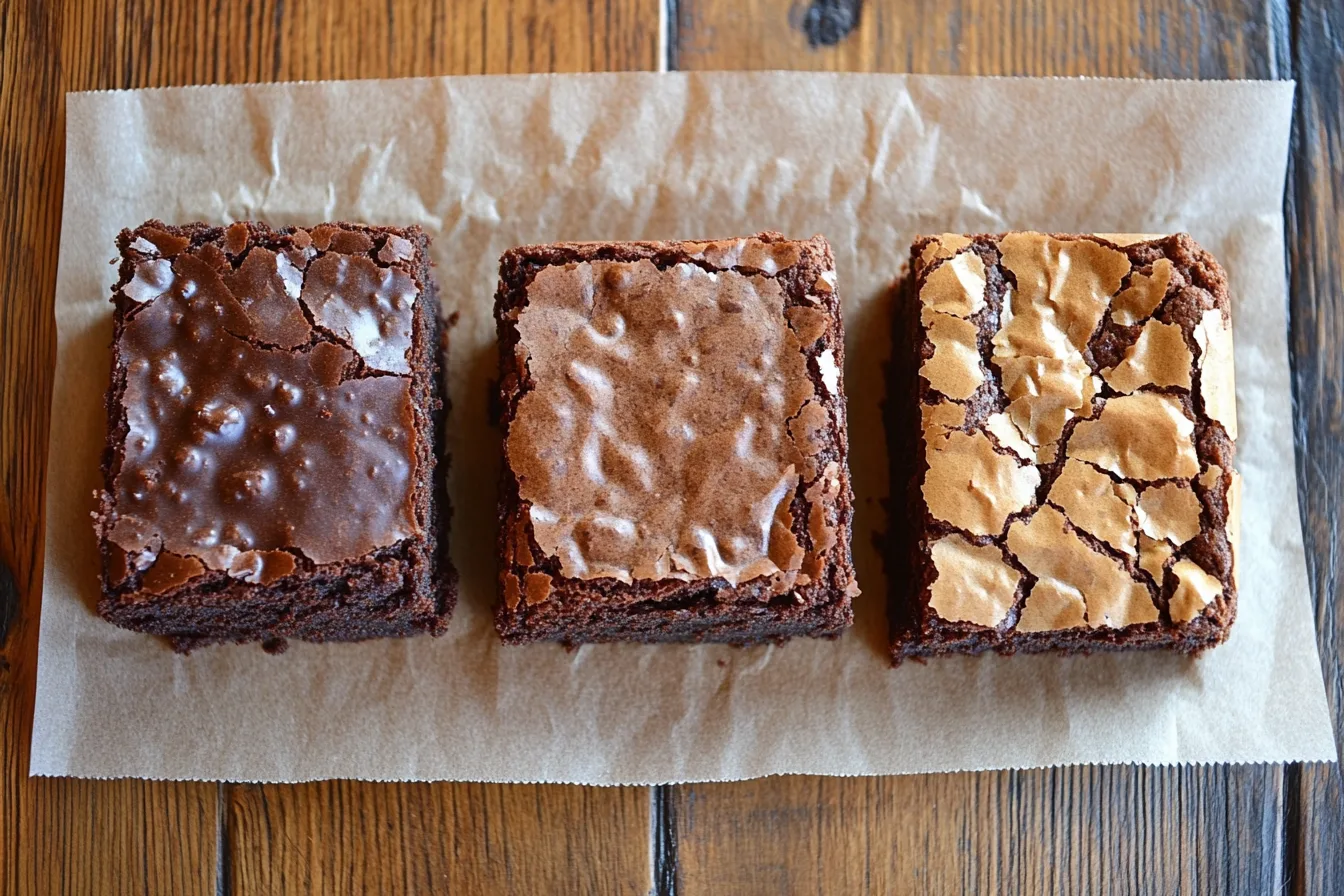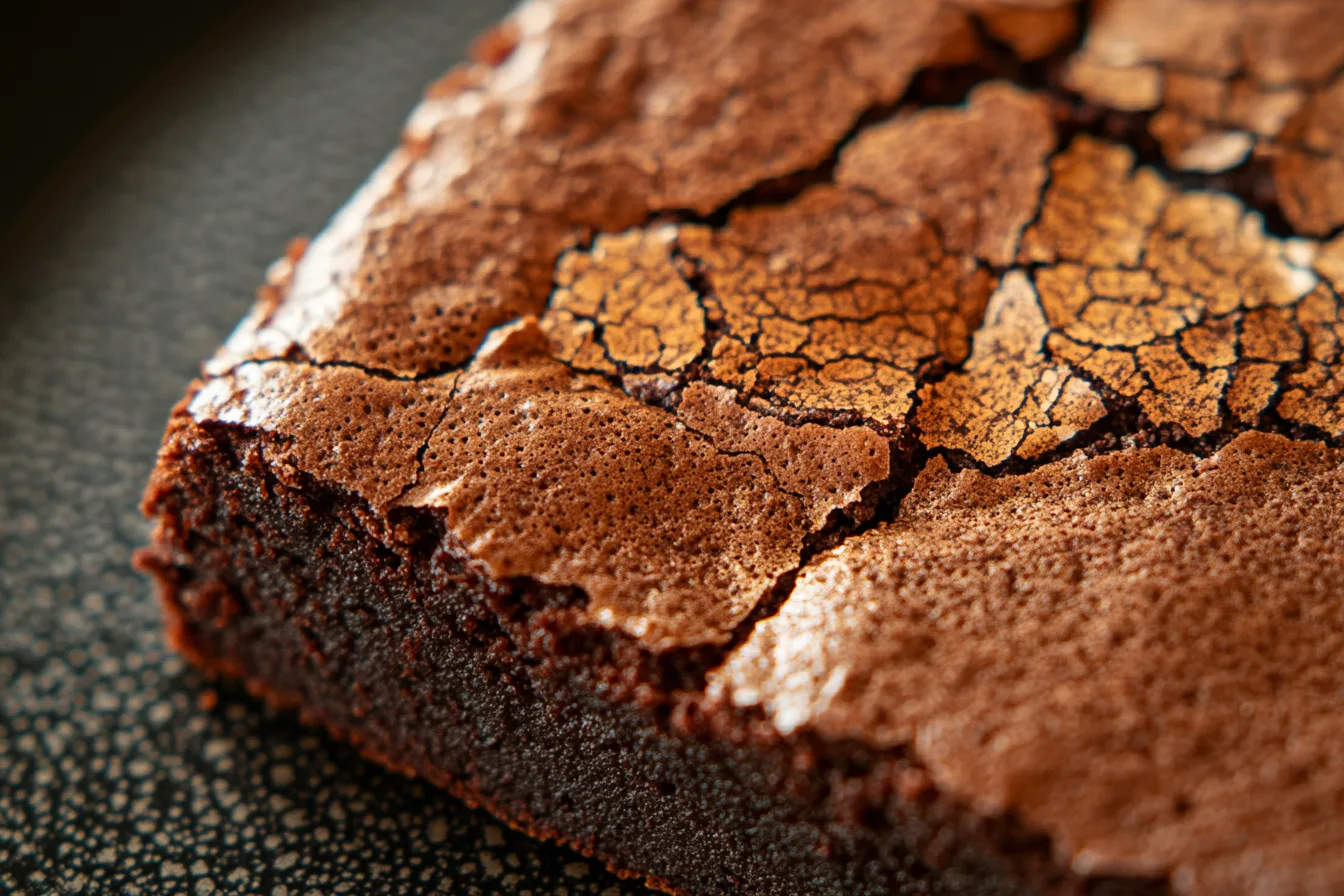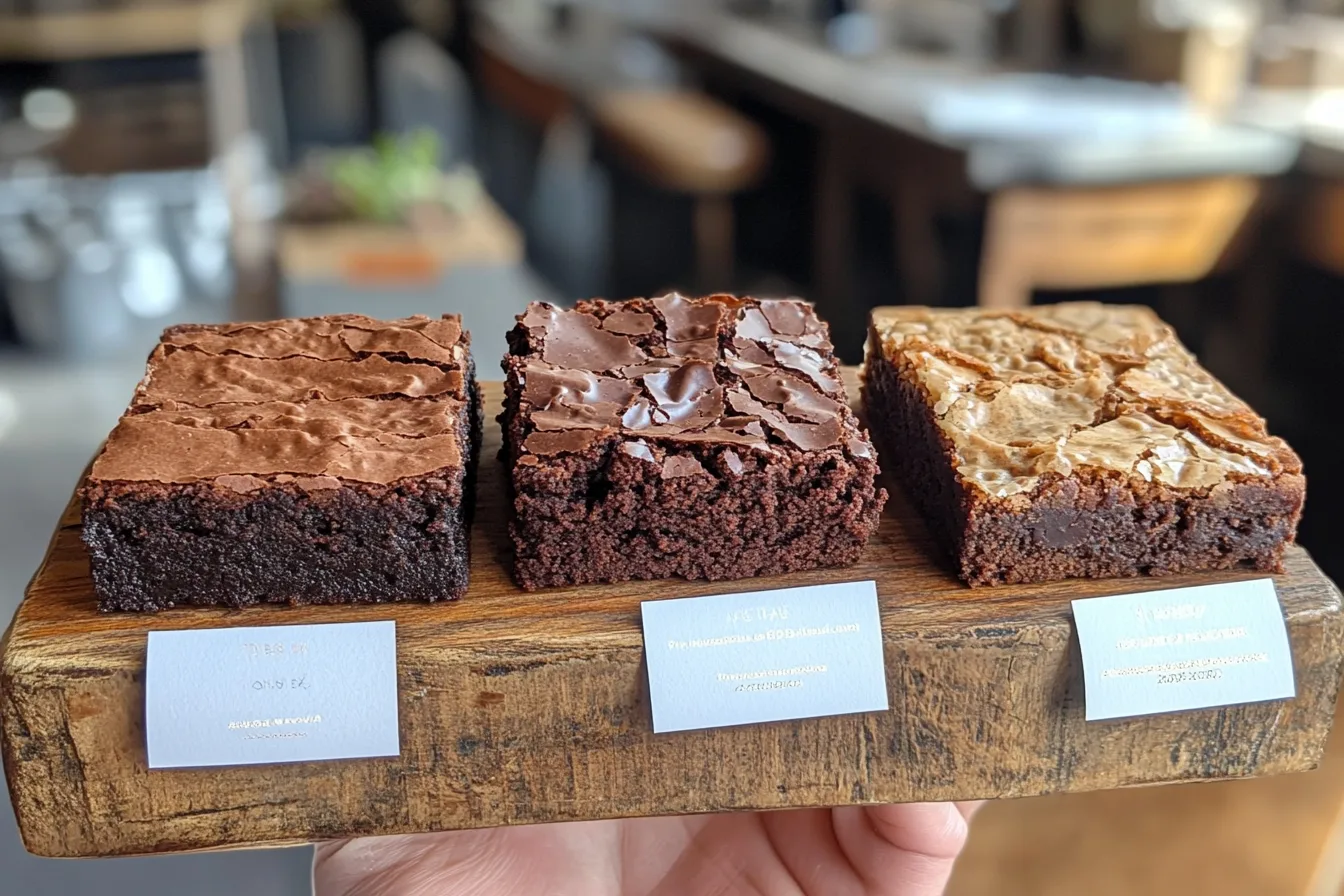What are the three types of brownies? This is a fundamental question for any brownie enthusiast. While countless variations exist, brownies are broadly categorized into three main types: fudgy, cakey, and chewy. Understanding these distinctions is key to achieving your desired brownie texture and flavor.
Decoding the Brownie Trinity: What Are the Three Types of Brownies?
The difference between fudgy, cakey, and chewy brownies lies primarily in the ratio of ingredients and the mixing technique. These elements influence the development of gluten and the amount of moisture in the final product.

Each type offers a unique sensory experience. Fudgy brownies are dense and rich, cakey brownies are light and airy, and chewy brownies strike a balance between the two.
Choosing the right type depends on personal preference and the desired outcome. Whether you crave intense chocolate richness or a more subtle, cake-like treat, there’s a brownie for you.
Understanding Fudgy Brownies
Fudgy brownies are characterized by their dense, moist, and intensely chocolatey texture. They are often described as being almost truffle-like in their richness. Achieving this texture requires a higher ratio of fat to flour.
Ingredients like melted chocolate and a generous amount of butter contribute to the fudgy texture. The minimal use of leavening agents (like baking powder) also helps to keep the brownies dense.
Underbaking slightly is crucial for fudgy brownies. The center should still be slightly soft when removed from the oven, as they will continue to set as they cool.
Delving into Cakey Brownies
Cakey brownies, in contrast, are light, airy, and resemble a chocolate cake in texture. They achieve this texture through a higher ratio of flour to fat and the inclusion of leavening agents like baking powder.
The use of cocoa powder rather than melted chocolate also contributes to the cakey texture. Cocoa powder has less fat than melted chocolate, resulting in a drier batter.
Overmixing the batter can also enhance the cakey texture by developing more gluten. These brownies generally require longer baking times.
Exploring Chewy Brownies
Chewy brownies fall somewhere in between fudgy and cakey. They offer a balance of richness and chewiness, making them a popular choice for many brownie lovers. What are the three types of brownies and which one is right for you?
Achieving this texture requires a balanced ratio of ingredients. Using both melted chocolate and cocoa powder can create a complex flavor and texture profile.
The addition of brown sugar contributes to the chewiness, thanks to its molasses content. A moderate amount of leavening agent helps to create a slightly raised and chewy brownie.
Secret #1: The Fat Factor
The amount and type of fat used significantly impact brownie texture. Butter contributes to chewiness, while oil creates a more moist and fudgy brownie. Using melted chocolate adds richness and fat.
A higher fat ratio generally leads to a fudgier brownie, while a lower fat ratio results in a cakier brownie. Experimenting with different types of fats can help you achieve your desired texture.
What are the three types of brownies if not defined by fat content? Keep that in mind when you bake!
Secret #2: The Sugar Selection
The type of sugar used also plays a role. Granulated sugar creates a crisper top and a slightly drier brownie, while brown sugar adds moisture and chewiness.
Using a combination of both sugars can create a more complex flavor and texture profile. The molasses in brown sugar contributes to the chewiness and adds a subtle caramel flavor.

Powdered sugar is also a valuable sugar to use in the brownie mixes. It will not have the same texture as if you were to use granulated.
Secret #3: The Flour Foundation
The amount of flour used is another key factor. Less flour results in a fudgier brownie, while more flour creates a cakier brownie.
Be careful not to add too much flour, as this can result in dry, tough brownies. Measure the flour accurately, using a kitchen scale for best results.
What are the three types of brownies, well they are all the product of flour! So do not forget it!
Secret #4: The Mixing Method
The way you mix the batter also affects the brownie texture. Overmixing develops gluten, which can lead to a tougher, cakier brownie.
Mix until just combined, and then gently fold in any additional ingredients. Avoid using an electric mixer, as this can easily lead to overmixing.
The gentle folding of the batter can assist in the baking process. This will help everything to come together and create the ultimate flavor.
Secret #5: The Baking Time Balance
Baking time is crucial for achieving the desired texture. Underbaking results in a fudgier brownie, while overbaking leads to a drier, cakier brownie.
Keep in mind that oven temperatures can vary, so it’s important to check the brownies frequently. Use a toothpick to test for doneness.
Be careful not to burn the edges while the center needs more baking time. This can ruin the entire brownie in the whole. What are the three types of brownies if they’re all burnt?
Beyond the Basics: Creative Variations
Once you understand the fundamentals, you can start experimenting with different variations. Adding chocolate chips, nuts, or extracts can enhance the flavor and texture.
Swirling in caramel or peanut butter can create a decadent treat. Frosting the brownies can add a touch of elegance. What are the three types of brownies if all that’s on top is frosting?
The possibilities are endless! Baking is an art form, so don’t be afraid to get creative and try new things.
FAQ
What can I add to brownie mix to make it taste better?
You can add coffee powder to enhance the chocolate flavor, extracts like vanilla or peppermint for additional aroma, and chocolate chips or nuts for added texture.
How many calories are in a lemon brownie?
A lemon brownie typically contains between 200 to 300 calories, depending on the recipe and size.
Why do you put coffee in brownies?
Coffee intensifies the chocolate flavor, adding depth and complexity without making the brownies taste overtly like coffee.

